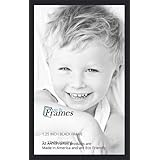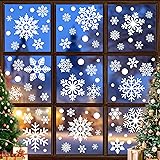Walking into a new kitchen, one might immediately envision gleaming white countertops, bright white cabinetry, and an overall pristine, minimalist aesthetic. This vision has dominated kitchen design for over a decade, representing cleanliness, modernity, and a blank canvas for many homeowners. However, as succinctly discussed in the video above, the tide of kitchen design trends is undeniably shifting, prompting a crucial question for anyone planning a renovation: are all-white kitchens truly “over” as we move towards 2025?
The Evolving Landscape of Kitchen Design Trends
For those preparing to sell their home in a couple of years, an existing all-white kitchen likely presents no significant issue; its broad appeal is well-established in the resale market. However, a different perspective is required if one intends to live in their home for a longer duration. Current design movements are indicating a distinct pivot away from the stark, monolithic white spaces that once reigned supreme. The demand for a more nuanced, inviting, and personalized kitchen environment has significantly increased, reflecting a broader shift in interior design philosophy.
The pure white kitchen, while undeniably elegant and timeless in some contexts, can sometimes be perceived as cold or lacking character. This perception often prompts designers and homeowners to seek alternatives that introduce warmth and depth. Consequently, more dynamic and layered approaches are being explored, transforming the heart of the home into a more engaging space. These emerging kitchen design trends aim to create environments that feel both current and enduringly comfortable.
Introducing Color: Beyond the Monochromatic Palette
One of the most significant changes observed in contemporary kitchen design is the thoughtful reintroduction of color. This shift does not necessarily imply a move towards overtly bold or vibrant hues throughout the entire space. Instead, color is being incorporated with greater intentionality, often manifested in more muted, sophisticated tones that complement rather than overwhelm. Cabinetry, for instance, is increasingly being chosen in soft greens, deep blues, or warm grays, offering a subtle yet impactful departure from pure white.
Accent walls or islands are also being utilized to introduce splashes of color, creating focal points within the kitchen. Such strategic placement ensures that the room maintains a sense of airiness and light, characteristics highly valued in modern homes, while simultaneously gaining a unique personality. The careful selection of these colors contributes to a palette that feels cohesive and inviting, moving away from the stark neutrality of an exclusively white environment. A harmonious balance is typically sought, where white elements are still present but are partnered with richer, more complex shades.
The Enduring Appeal of Wood Texturing in Kitchens
Alongside the infusion of color, the increased prevalence of wood texturing is another key element shaping future kitchen aesthetics. The natural warmth and organic beauty of wood are being embraced to counteract the potentially cold feeling associated with all-white spaces. Various wood species, finishes, and applications are being explored, from bespoke cabinetry to island bases, open shelving, and even ceiling accents.
The tactile quality of wood offers a much-needed textural contrast, adding depth and a sense of grounding to the kitchen. This material inherently connects indoor spaces with the natural world, a principle increasingly valued in biophilic design. It is often integrated in forms that highlight its grain and natural imperfections, celebrating authenticity rather than uniformity. The strategic placement of wood elements is carefully considered to ensure a balanced and visually interesting composition within the broader design scheme.
Achieving Intentional Neutrality: A Balanced Approach
It is important to understand that the move away from all-white kitchens does not mean white is entirely discarded. Instead, it is being redefined within a new context where it serves as a foundational element rather than the sole dominant feature. A truly modern kitchen often involves a sophisticated blend of white with other colors and textures, creating a palette that feels both fresh and timeless. This approach allows for a “neutral” base to be maintained, ensuring broad appeal and versatility, while simultaneously introducing distinctive elements that reflect personal style.
The concept of intentional neutrality is central to this evolving trend. White can be effectively utilized on perimeter cabinets or walls, for example, while an island in a contrasting color or natural wood becomes a stunning focal point. This creates visual interest and depth, preventing the space from feeling monotonous or clinical. Carefully selected hardware, lighting fixtures, and tile backsplashes also contribute to this layered look, enhancing the overall design integrity without sacrificing brightness or a sense of spaciousness.
Designing for Longevity and Personal Expression
Ultimately, these shifts in kitchen design are driven by a desire for spaces that resonate on a deeper, more personal level and offer greater longevity. Homeowners are increasingly looking for kitchens that feel lived-in and reflective of their own taste, rather than merely following a passing trend. By incorporating varied textures, thoughtfully chosen colors, and natural materials like wood, kitchens can be designed to age gracefully and remain appealing for many years to come.
The emphasis is now placed on creating a kitchen that feels curated and cohesive, where every element serves a purpose in building a specific mood and aesthetic. This intentionality ensures that the space avoids the “cold” or generic feeling sometimes associated with past trends. While the widespread appeal of all-white kitchens is understandable, the future of kitchen design clearly points towards a richer, more diverse palette that champions both warmth and individuality.











